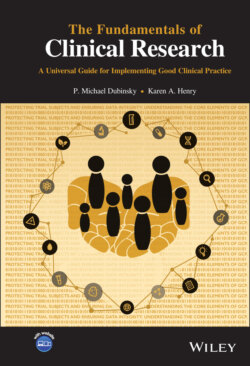Читать книгу The Fundamentals of Clinical Research - P. Michael Dubinsky - Страница 18
1.4 The Emergence of the ICH and Its Guidelines
ОглавлениеGCP as we know it today was born not just out of tragic episodes in human experimentation such as the Tuskegee Syphilis Study and the abuses of Nazi researchers in the WWII concentration camps. It was very much a work‐product of the for‐profit drug industry which needed harmonized standards to facilitate the marketing application process among the world’s primary producers and consumers of pharmaceuticals. An additional motivation for the ICH concept was to remove duplicative testing which would reduce the exposure of humans to investigational medicinal products, unnecessarily. Viola!, the emergence of the ICH. The ICH was born out of collaboration between the regulatory authorities and industry trade associations. It therefore had the best of both regulatory thinking and for‐profit science. The newly born organization moved quickly to develop and propose a number of key guidelines which would benefit the entire pharmaceutical industry. GCP was one of the efficacy guidelines defining approaches to clinical trial activities. Others included clinical safety for Drugs Used in Long Term Treatment (E1) and general considerations in clinical trials (E8).
It is important to note that in establishing the ICH approach the industry and regulators did not attempt to cut corners or somehow create a shortcut bypassing a structured process. Instead the ICH framework has become a model for sound business accomplishment while operating in a transparent and efficient manner. Inclusion of interested parties was encouraged and while the founding members remain in place as the governing entity, participation by other global regions and countries has been fostered and encouraged as observers and as part of global cooperation. Canada, Brazil, China and Australia to name a few participate in ICH meetings and workgroups.
In 2015 the ICH took several steps to solidify its organizational presence and expand its influence. It established itself as an association under Swiss law and it invited regulators and industry counterparts from Switzerland, and Canada to join as full members. It also adopted a name change – The International Council for Harmonization – and continues to grow and prosper today.
Notwithstanding the harmonization mission of the ICH, implementation of guidelines such as GCP even among the founding members of the ICH has not been identical. The European Union and Japan have adopted the GCP guideline into their legal requirements for the conduct of clinical trials. The United States has not, however, done so. The reasons for this difference in adoption of the GCP, as well as other ICH guidelines, lie primarily in the legal system supporting the regulatory framework. For example the United States has had in place regulations governing new drug studies since the early 1960s including requirements associated with informed consent. Modifying those regulations to integrate or adopt the GCP guideline would have been a monumental task. In addition, the system in place to modify/change regulations is a cumbersome one which would encounter difficulties and complexities in keeping up with the technology changes that can more efficiently be processed by a nongovernmental entity such as the ICH.
Without doubt, the US FDA agrees with the ICH GCP guidance, they helped write it! The manner in which the FDA has integrated GCP into its regulatory scheme provides a good example of harmonization with its ICH counterparts as well as demonstrating its support and approval for the application of GCP for human clinical trials.
FDA in a 2004 Federal Register Notice of Proposed Rulemaking (NOPR) [16] to adopt GCP in 21 Code of Federal Regulations (CFR) 312.120 as a reference point for the acceptance of foreign clinical studies not conducted under an IND. At the time, the criteria in 21 CFR 312.120 called for foreign clinical studies to be conducted in accordance with the ethical principles in the Declaration of Helsinki. In reviewing the Preambles to both the NOPR and the 2008 Final Rule [17] it is apparent that the FDA wanted to demonstrate its support and agreement with GCP but was grappling with adopting GCP as a document into law because it would pose administrative difficulties from a procedural and regulatory standpoint. The end product is that FDA removed the reference to the Declaration of Helsinki, which itself had become problematic from several policy standpoints and substituted GCP as the criteria for acceptance of data generated in studies not conducted under an IND. They even devised a set of 11 specific pieces of information that should be described as evidence that GCP was followed during the course of the human clinical trial. It was a win for the FDA and a win for GCP.
Contemporaneous with the development of the ICH GCP was the development of a set of GCP expectations by the World Health Organization [18]. Subsequent to the publication of the ICH GCP, a number of countries has published its own version by modifying the standard to include requirements that fit their regulatory model.
In the next Chapters we will outline the regulatory environment within which GCP is enabled.
